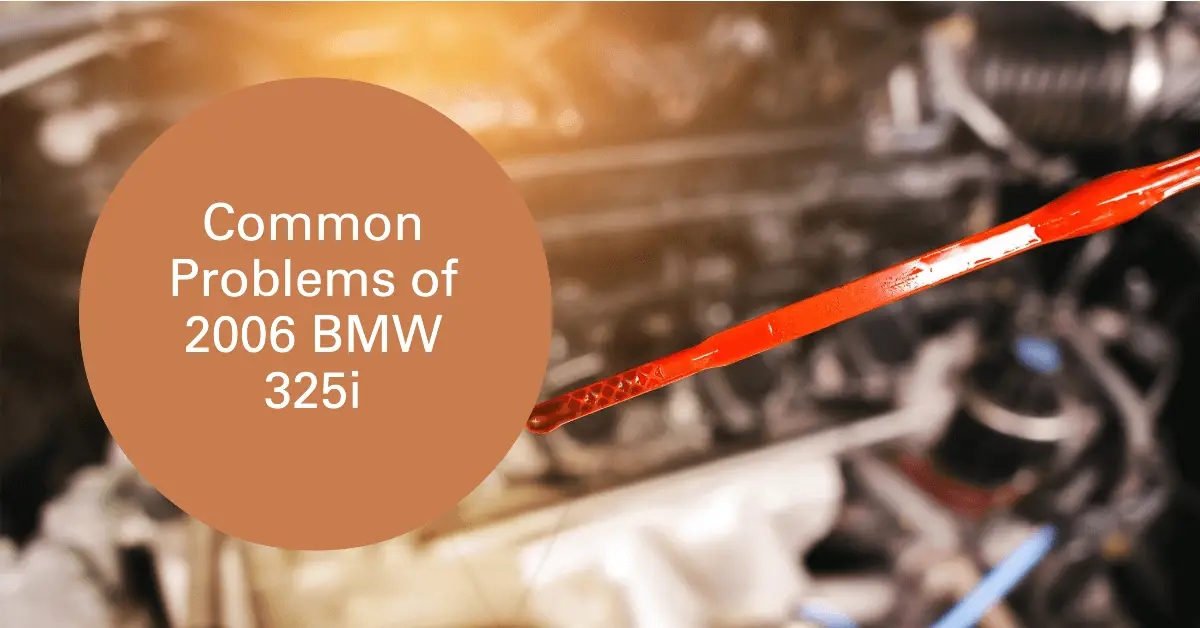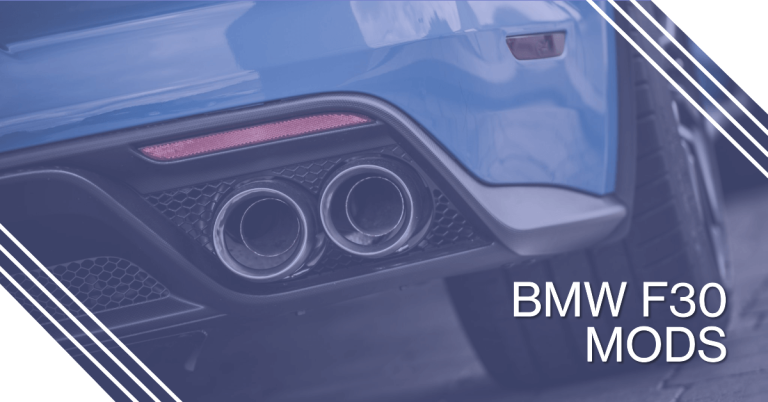2006 BMW 325i Problems: A Comprehensive Guide
Are you a 2006 BMW 325i owner experiencing issues with your vehicle? If so, you’re not alone. The 325i is a popular model among BMW enthusiasts, but like any aging vehicle, problems can arise over time.
This comprehensive guide will walk you through the most common 2006 325i problems, symptoms, causes, and solutions to get your BMW back up and running. We’ll provide repair tips to fix issues yourself or give you an idea of what to expect at the mechanic.
So what are the most common mechanical and electrical issues with the 2006 BMW 325i, and how can you diagnose and repair them?
The 2006 325i is most prone to engine problems like oil leaks, overheating from a bad thermostat, and timing chain guide failures. Electrical issues including battery drain, blower motor failure, and instrument cluster malfunctions are also prevalent. Transmission problems like harsh shifting and no reverse gear also affect some 325i models over time.
In this 2500+ word guide, we’ll cover each of these common issues in detail, providing actionable advice on how to get your 2006 325i back on the road. Let’s dive in!
Engine Problems
The award-winning N52 3.0L straight six engine gives the 2006 325i responsive power and performance. However, some inherent design flaws in the N52 lead to a few common engine-related problems.
Oil Leaks
One of the most reported issues on the 2006 325i is oil leaks from multiple sources. The most problematic areas include:
- Valve cover gasket – The rubber gasket sealing the valve cover is prone to deterioration over time. When it fails, oil can leak down the sides of the engine causing spots under the car. Replacing the valve cover gasket is relatively easy and cheap.
- Oil filter housing gasket – This gasket seals the oil filter housing to the engine block. If it becomes brittle or cracks with age, an oil leak can occur here as well. The housing may need to be cleaned thoroughly or replaced along with installing a new gasket.
- Oil pan gasket – The gasket where the oil pan attaches to the bottom of the engine is another potential leak source due to its tendency to harden over time. Accessing the oil pan area requires some disassembly so it’s a more involved repair.
- Crankcase vent lines – Plastic vent lines running from the valve cover to the intake manifold can crack leading to leaks. Replacements are inexpensive.
Symptoms of an oil leak include low oil levels, spots underneath your parking spot, foggy oil, and even smoke coming from the exhaust if the leak is significant enough. Diagnosing the specific source of the leak usually requires a pressure test and thorough visual inspection.
Addressing oil leaks early is critical to avoid catastrophic engine damage from low oil levels. Keep an eye on your oil level between changes and look for signs of leaks. Identify the source, then replace gaskets, seals, and degraded hoses to stop the oil loss. Proper regular maintenance goes a long way on the N52 engine.
Overheating from Thermostat Failure
The thermostat on the 2006 325i controls coolant flow to regulate operating temperature. A failed thermostat can cause chronic overheating or temperature gauge fluctuations.
Symptoms of a bad thermostat include:
- Temperature needle constantly shifting up and down
- Taking longer than normal to warm up
- Overheating at idle but not while driving
- Repeated need to add coolant
First, check for leaks in the cooling system leading to low coolant. Top up if needed. If overheating issues persist, the thermostat itself has likely failed. The thermostat may be stuck open or closed, preventing proper coolant circulation.
Replacing the thermostat is an easy DIY fix in most cases. Locate the thermostat housing on the engine, drain some coolant, then remove and swap in a new thermostat gasket and housing cover. Use a quality OEM replacement thermostat for optimal reliability. This can resolve overheating problems if the thermostat was the culprit.
Timing Chain Guide Failure
The timing chain guides are plastic components that hold the timing chain in place and prevent excess slack that can cause engine timing issues. But in the N52 engine, these plastic guides are prone to breaking down prematurely, leading to a rattling noise from the engine.
Symptoms of failing timing chain guides include:
- Rattling or tapping sound coming from engine front
- More noticeable at cold start or high RPMs
- Occasional check engine light for camshaft/crankshaft correlation errors
The cheap plastic construction is the root cause. As the guides deteriorate, slack forms in the timing chain causing noise and eventual timing issues. Though not an immediate catastrophic failure risk, a rattling timing chain indicates worn guides that should be addressed.
Replacing the full timing chain guide set is the proper fix, but does require pulling the timing cover. So if a rattle develops, address it promptly before guide pieces get sucked into the engine! Using improved aftermarket guides made of durable composites instead of plastic can be a worthwhile upgrade for longevity.
Electrical System Problems
Electrical issues in the 325i can stem from individual components failing or more difficult-to-diagnose electrical gremlins. Here are some of the most common electrical issues.
Battery Drain
If your 2006 325i won’t start or you notice dimming headlights or sluggish cranking, a parasitic drain on the battery could be the culprit. Causes include:
- Failed alternator – Not properly charging the battery while driving leads to drain. Test alternator output and replace if out of spec.
- Electrical short – Damaged wiring or a malfunctioning component can continuously draw power when the car is off. Identifying and repairing the specific short is key.
- Stuck relay – Relays controlling various systems can stick on, slowly draining the battery overnight. Testing relays and switches helps locate the offender.
- Telematics – BMW’s Combox telematics system can sometimes lose connection and continuously try to reconnect, killing the battery in the process. Unplugging the Combox is a quick fix.
Diagnosing parasitic drains requires methodically testing output from charging systems, removing fuses, and observing voltage drop to pinpoint the cause. Battery and alternator testing along with thorough electrical inspection will uncover the issue.
Blower Motor Failure
BMW’s patented flap-style climate control system relies on a blower motor and resistor to modulate airflow. Failure of either component can occur:
- Blower motor – The electric motor itself can burn out leading to no air from vents at all speeds. Test for power at the motor plug and replace if faulty.
- Blower resistor – This controls fan speed based on voltage. Internal issues can block airflow at certain speeds. Try tapping on the resistor box under the glovebox as a temporary fix. But replacement is the ultimate solution.
Lack of air from vents is the telltale symptom of blower issues. No cold air from A/C points to blower problems rather than a refrigerant leak. Locate the source of the problem then replace the blower motor or resistor to restore climate control airflow.
Instrument Cluster Failure
The instrument cluster provides vital driving information via gauges and warning lights. But electrical gremlins can lead to blank or scrambled clusters:
- Bad solder joints – The back of the cluster has multiple solder points that can fail over time, interrupting circuits. Reflowing solder joints sometimes temporarily fixes issues.
- Failed pixels – Individual LCD pixels can short out leading to missing sections of gauges. Visually inspecting for dark spots helps identify. Eventually the cluster needs replacement when enough pixels fail.
- Faulty LCD – Sometimes no amount of re-soldering or pixel tweaks resolves the issue if the LCD panel itself is damaged. A bad contact ribbon cable or corroded connectors could also be the culprit.
Start with having the solder joints reflowed to revive connections. If that fails, inspect closely for pixel anomalies pointing to LCD damage. Replacement of the entire instrument cluster will be required if the issue is widespread.
Transmission Problems
While not as common on 2006 325i models, some owners encounter transmission issues as mileage increases:
Harsh Shifting
The ZF 6-speed automatic can start to exhibit symptoms of worn transmission components leading to rough shifting:
- ** Delayed/harsh engagement** – Most noticeable when accelerating from a stop. Shifting into gear happens with a significant clunk.
- Erratic shifts – Rapid up and down shifting when trying to maintain constant speed. Feels like the transmission can’t find the right gear.
- Slipping between gears – RPMs flare up between shifts indicating slippage. Lack of power transfer through transmission.
Typical causes of deteriorated shifting include low transmission fluid, worn shift solenoids, clutch packs wearing down, and leaks causing low pressure. Checking the fluid level is the first step. If full and clean, further inspection and potential transmission rebuild will be needed.
No Reverse Gear
Another transmission fault is loss of the reverse gear entirely:
- No engagement – Despite shifting to reverse, the car only moves forward as if still in drive.
- Grinding – Attempting to shift to reverse results in loud grinding but no movement.
The internal reverse gear itself has likely failed or there is damage to the reverse shift fork preventing mechanical reversal. Continuing to drive the car will require transmission repair or replacement to restore reverse functionality.
Conclusion
While the 2006 BMW 325i provides an enjoyable driving experience for owners, it has its share of potential issues just like any aging vehicle. Engine oil leaks, electrical faults, and transmission problems seem most prevalent based on forums and expert analysis.
Catching problems early and addressing the symptoms promptly leads to cheaper and easier repairs. Use this comprehensive guide to understand the most common 2006 325i problems so you know what to watch out for. Equipped with this overview, you can make informed maintenance decisions and get ahead of problems before they become major issues.
With some diligent preventative care and attention when problems do pop up, the 325i can remain a reliable luxury sedan for years to come. Regular maintenance combined with this guide to common issues will keep you on the road and enjoying your 2006 BMW.







